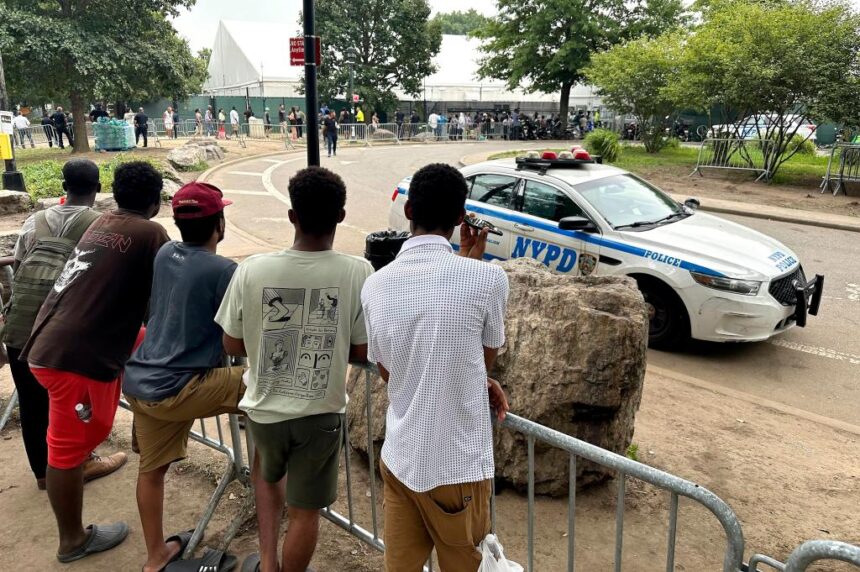Last Monday, a tragic incident occurred when Sandra Serrano, a Venezuelan migrant, was shot and killed outside the Randall’s Island migrant shelter. The unfortunate event was believed to be a retaliatory shooting related to a robbery, marking the second killing at the shelter and the eighth migrant-related killing this year.
In order to address concerns regarding migrant crime in New York City, Mayor Adams must provide concrete data to the public.
Serrano’s murder was one of four migrant-related murders in July alone, highlighting the need for a better understanding of the situation.
Incidents like the shooting of two men outside a Brooklyn migrant shelter, the violent death of another migrant in a nearby park, and past disputes resulting in fatalities emphasize the vulnerabilities faced by migrants in the city.
Various non-fatal crimes, including rape, shootings, armed robberies, and theft, have also plagued the migrant community, raising questions about the overall crime rate in comparison to the city’s average.
Despite concerns raised by Mayor Adams about the danger posed by migrant gang members, the lack of official crime data categorized by immigration status leaves the public in the dark.
Without clear data, assumptions about migrant impact on crime rates are met with generalizations and ideological responses.
Historically, immigrant crime rates have been lower than the national average, but the recent influx of migrants under the Biden administration has brought about new challenges.
The sheer number of migrants arriving in the city, coupled with economic competition and a growing underground economy, presents a complex environment conducive to criminal activities.
The rise in public disorder and lawlessness has attracted Venezuelan gang members, leading to suspicions of their involvement in various crimes, including the shooting of police officers.
While reported felony crime levels may show a slight decrease from the previous year, they remain significantly higher than pre-2019 levels, indicating persistent challenges in maintaining public safety.
A lack of coherent law enforcement strategies, compounded by leniency in state-level reforms, contributes to the challenges faced in addressing migrant-related crimes.
The administration’s reluctance to provide detailed data on migrant crime prevents informed decision-making and perpetuates misinformation.
By collecting and reporting aggregate data on migrant involvement in crimes, law enforcement agencies could provide valuable insights into the situation without compromising individual privacy.
Understanding the true extent of migrant crime in the city is essential for developing effective policies and addressing public safety concerns.
Policy decisions should be based on factual data rather than preconceived notions, ensuring a balanced and informed approach to addressing migrant-related challenges.
Nicole Gelinas is a senior fellow at the Manhattan Institute. Updated and adapted from City Journal.






